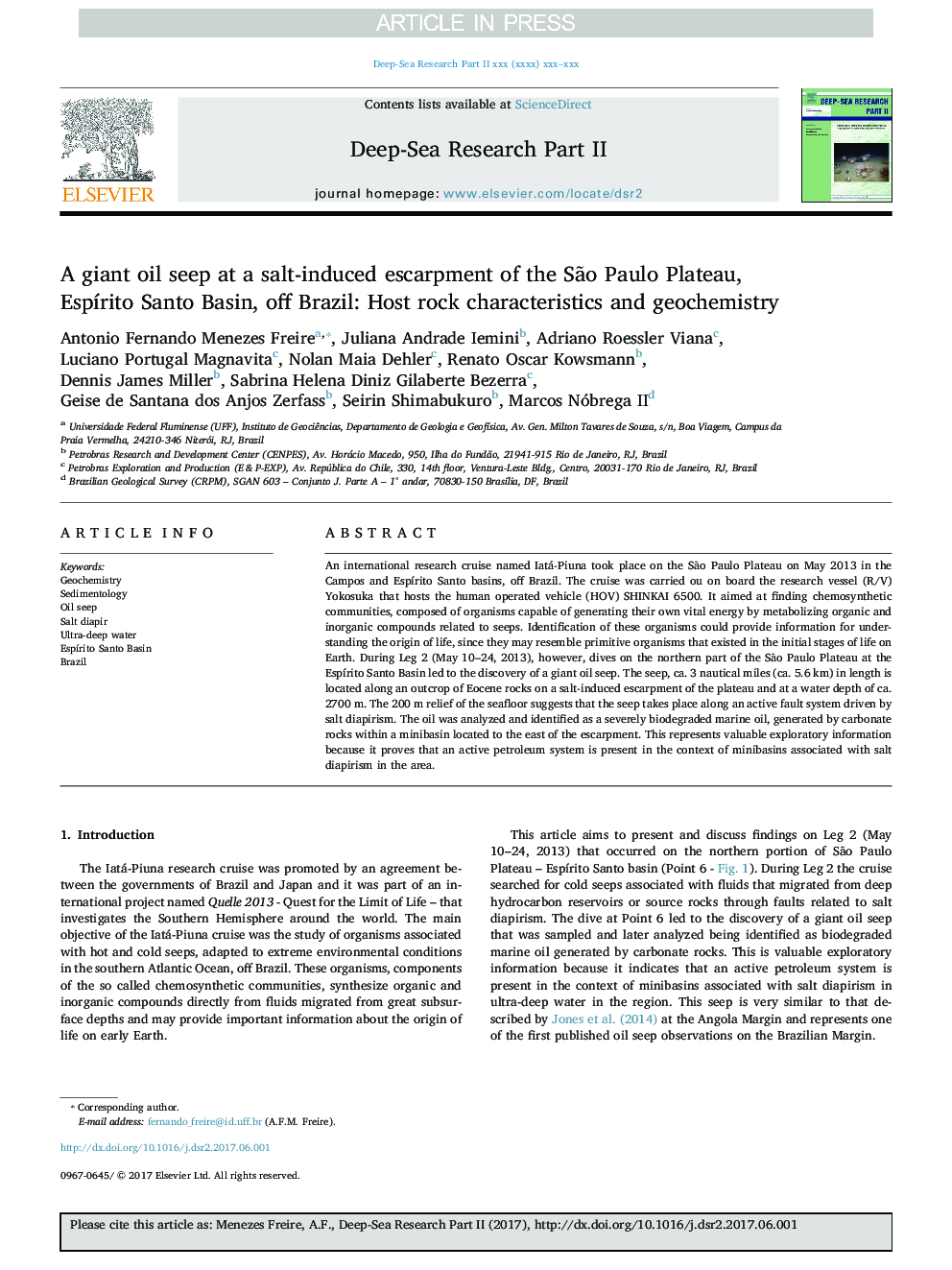| Article ID | Journal | Published Year | Pages | File Type |
|---|---|---|---|---|
| 8884545 | Deep Sea Research Part II: Topical Studies in Oceanography | 2017 | 8 Pages |
Abstract
An international research cruise named Iatá-Piuna took place on the São Paulo Plateau on May 2013 in the Campos and EspÃrito Santo basins, off Brazil. The cruise was carried ou on board the research vessel (R/V) Yokosuka that hosts the human operated vehicle (HOV) SHINKAI 6500. It aimed at finding chemosynthetic communities, composed of organisms capable of generating their own vital energy by metabolizing organic and inorganic compounds related to seeps. Identification of these organisms could provide information for understanding the origin of life, since they may resemble primitive organisms that existed in the initial stages of life on Earth. During Leg 2 (May 10-24, 2013), however, dives on the northern part of the São Paulo Plateau at the EspÃrito Santo Basin led to the discovery of a giant oil seep. The seep, ca. 3 nautical miles (ca. 5.6 km) in length is located along an outcrop of Eocene rocks on a salt-induced escarpment of the plateau and at a water depth of ca. 2700 m. The 200 m relief of the seafloor suggests that the seep takes place along an active fault system driven by salt diapirism. The oil was analyzed and identified as a severely biodegraded marine oil, generated by carbonate rocks within a minibasin located to the east of the escarpment. This represents valuable exploratory information because it proves that an active petroleum system is present in the context of minibasins associated with salt diapirism in the area.
Related Topics
Physical Sciences and Engineering
Earth and Planetary Sciences
Geology
Authors
Antonio Fernando Menezes Freire, Juliana Andrade Iemini, Adriano Roessler Viana, Luciano Portugal Magnavita, Nolan Maia Dehler, Renato Oscar Kowsmann, Dennis James Miller, Sabrina Helena Diniz Gilaberte Bezerra, Geise de Santana dos Anjos Zerfass,
